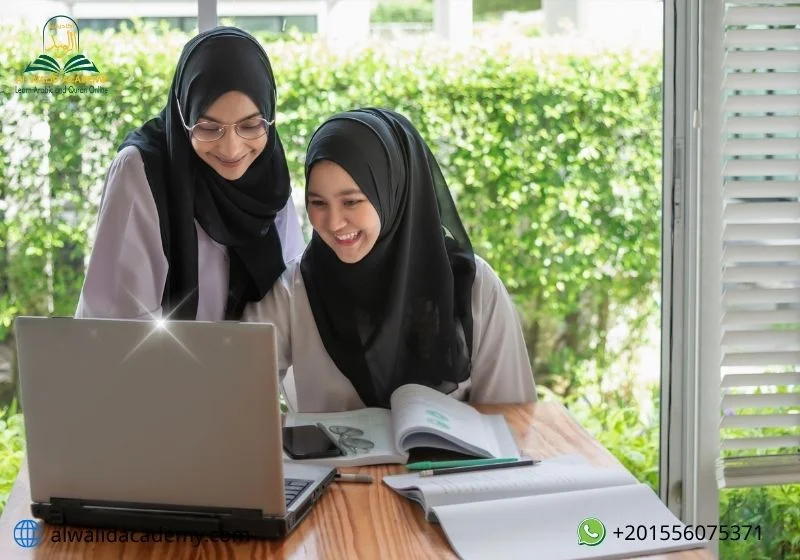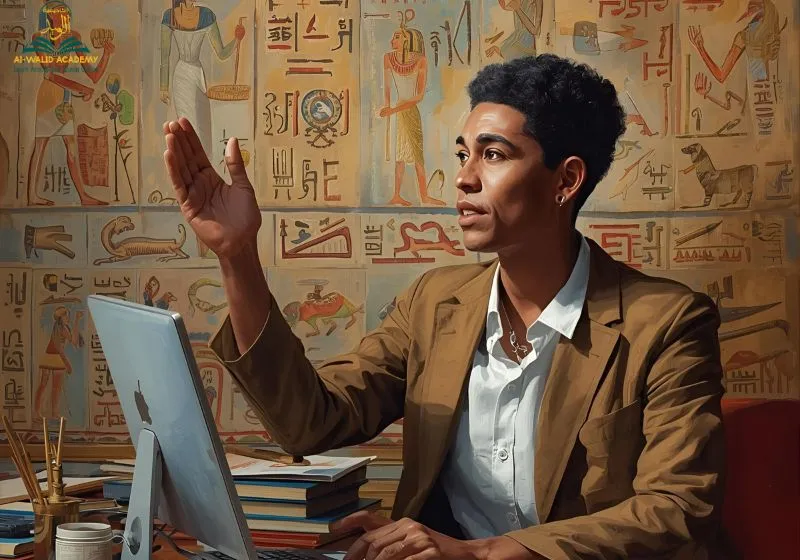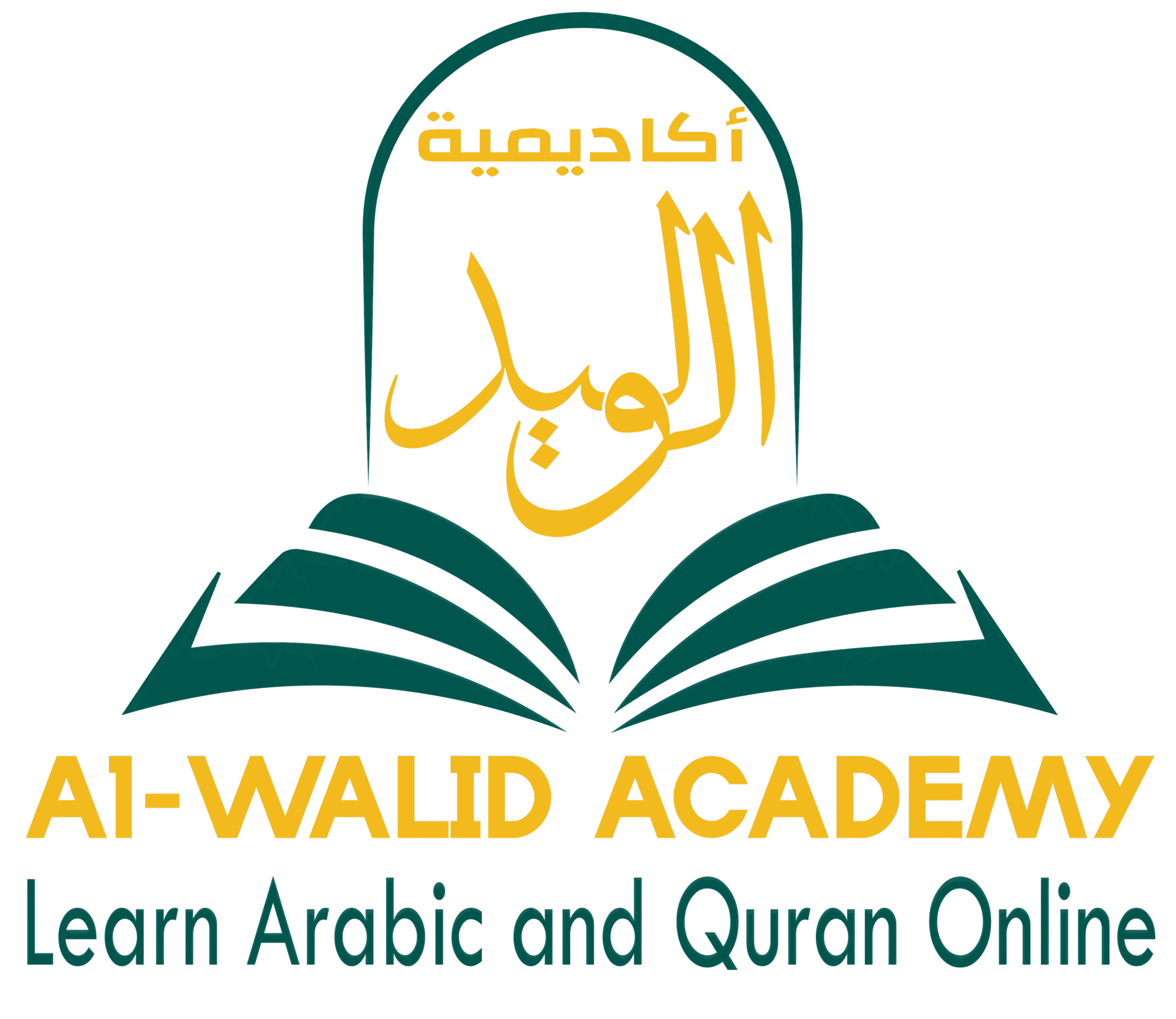Many learners get confused when they hear the term Classical Arabic vs modern Arabic and wonder which one they should start with. Arabic has its powerful, original form in the Quran — and another form we hear in media and schools today.
Classical Arabic vs Modern Arabic – What’s the Difference?
We’ll clearly explain what Classical Arabic vs Modern Arabic really means, and when each one is used — especially for learners who want to study the Quran or build a strong Arabic foundation.
You can learn anytime and from anywhere with all our Quran courses online, whether your goal is religious fluency, academic growth, or communication skills.
Understanding the Two Main Forms of the Arabic Language
Here we break down the characteristics of each form, and how both play an important role in learning and communication today.
- Classical Arabic: Fully structured and preserved through Quranic text and classical literature. Essential for accurate memorization and deeper understanding of the Quran.
- Modern Standard Arabic (MSA): The formal language used in education and modern publications — designed to express modern technology, science, and everyday topics without losing its original identity.
Most native speakers view both forms as one language — Fus’ha — but used differently depending on the context.
How Arabic Evolved from Classical to Modern Times
This part takes you through the natural development of Arabic throughout history — from the origins of Classical Arabic to the rise of today’s Modern Standard Arabic.
- After the Quran was revealed, scholars documented and organized grammar to preserve the language — which solidified the foundation of Classical Arabic.
- During Islamic civilization expansion, Arabic absorbed new ideas and vocabulary due to cultural exchange.
- In modern times, the rise of media, technology, and education systems required a more contemporary form — leading to the creation of MSA as we know it.
- Today, Classical Arabic remains essential for religion and heritage, while MSA supports modern communication across the Arab world.
If you want to understand the Quran deeply while learning the language, our Quranic Arabic Course helps you connect Classical Arabic rules with real Qur’anic examples.
What Is Classical Arabic?
Classical Arabic is the prestigious literary register of Arabic that emerged around the 7th century and was used in the Qur’an and early Arabic literature.
It retains a full system of grammar, complex syntax, and archaic vocabulary.
For those committed to Quranic studies or deep Arabic language work, Classical Arabic remains the cornerstone.
For learners focusing on everyday communication, our Modern Standard Arabic program builds strong speaking and writing skills used in schools, media, and professional life.

The Language of the Quran and Early Islamic Scholars
The Quran was revealed in what is recognized as Classical Arabic. This language was consciously preserved in its form and meaning.
Early Islamic scholars (grammarians, linguists, expositors) adopted it to write grammar and rhetorical works, ensuring its stability and prestige.
Therefore, mastering Classical Arabic is critical for anyone seeking to engage deeply with Quranic texts and the heritage of Arabic linguistic scholarship.
Grammar, Eloquence, and Structure in Classical Arabic
Classical Arabic features full inflectional endings (case-marks for nominative, accusative, genitive), which are less prominent in later forms.
Its syntax allows for flexible word order (e.g., verb-subject-object) and emphasizes rhetorical devices—metaphor, parallelism, and rich vocabulary.
As a result, Classical Arabic is not only a language of meaning but also a craft of expression—requiring both precision and appreciation of its aesthetic dimension.
Beginners who want to master both forms of Arabic can start with our Learning Arabic for Beginners pathway, designed to make Classical and Modern Arabic easier together.
Where Classical Arabic Is Still Used Today
Classical Arabic remains the language of the Qur’an, Hadith, classical literature, and is still taught in specialized courses worldwide.
It’s less common in everyday conversation or media but serves as the authoritative register for religious, historical and linguistic studies.
For learners and scholars, maintaining competence in Classical Arabic opens access to a vast heritage and deep linguistic insight.
Learn Quran, Arabic, and Islamic Studies with certified teachers in fun, interactive, and personalized sessions. Join thousands of students around the world and begin your path today!
What Is Modern Standard Arabic (MSA)?
Modern Standard Arabic, or MSA, is the evolution of Classical Arabic adapted to suit the modern era.
It is used in education, news broadcasts, books, and formal speeches — essentially, a form that all Arabic speakers across dialects can understand.
MSA is a unified language used across the Arab world for written and spoken communication that everyone can follow.
The Official Language of Media, Education, and Government
Here we look at why MSA has become the default language for our everyday institutions.
- Media relies on it entirely: news bulletins, dubbed films, the press.
- Schools and universities teach their subjects in it.
- Governments use it for official transactions and legislation.
Simply put, it is the language that brings the Arab world together under one comprehensible form.
Simplified Grammar and Vocabulary for Modern Use
MSA retained the core of Arabic’s structure but relaxed some of the more complex Classical grammar.
It also introduced modern terminology: Internet, technology, science — concepts not present in classical texts.
The result? A language easier to learn and use, while still elegant, formal and retaining Arab identity.
If your goal is religious learning, our Tajweed Course helps you pronounce Classical Arabic correctly and confidently.
How MSA Bridges Classical Arabic and Local Dialects
Here we explore how MSA acts as a bridge between the language of the Quran and everyday dialects.
- Classical Arabic is the root.
- Local dialects are the spoken forms in the house, the street, and daily life.
- And MSA comes in between: It maintains the foundational grammar without the full complexity, and uses contemporary vocabulary we all understand.
That’s why it’s the best starting point for learners who want to study Arabic and later proceed to Qur’anic memorization with confidence.
Key Differences Between Classical and Modern Arabic

Although both forms share the same linguistic roots, there are clear differences in usage, vocabulary, grammar, and overall style.
Classical Arabic has more complex grammar and sentence structures that are not commonly used today.
MSA simplifies many of these complexities and introduces new modern terminology, making it more suitable for education, media, and daily communication.
These differences are important for anyone learning Arabic or working in Quran memorization, writing, or formal communication — because you must know which form to use and when.
Classical Arabic vs Modern Standard Arabic
| Feature | Classical Arabic | Modern Standard Arabic (MSA) |
| Modern Standard Arabic (MSA) | Highly complex with full case endings | Simplified rules, easier for learners |
| Sentence Order | Often Verb–Subject–Object | More flexible; commonly Subject–Verb–Object |
| Vocabulary | Religious, poetic, ancient contexts | Modern, technological, includes borrowed terms |
| Pronunciation | Minimal vowel markings in most texts | Modern, technological, includes borrowed terms |
| Writing Style | Long, ornate, rhetorical | Short, clear, suitable for fast communication |
| Main Usage | Quran, heritage texts, religious studies | Media, education, government |
| Accessibility | Harder for general learners | Widely understood and more practical |
Grammar and Syntax Changes Over Time
Classical Arabic often follows a Verb–Subject–Object structure, while MSA prefers Subject–Verb–Object in most modern writing styles.
Full grammatical inflection and advanced syntax are required in Classical Arabic, whereas MSA reduces some of these rules to make the language easier to learn and widely accessible.
Vocabulary — From Ancient Roots to Modern Terms
Classical Arabic vocabulary centers heavily on religion, literature, nature, and poetry. Many of those words are not used frequently today.
MSA introduces new terminology for technology, science, and daily life — such as phone, computer, and internet — while still preserving the classical linguistic foundation.
For those aiming to memorize the Qur’an and improve language skills at the same time, our Quran Memorization Course strengthens your Classical Arabic structure through daily practice.
Pronunciation and Expression in Everyday Use
Classical Arabic requires full vowel markings (tashkeel) and precise pronunciation, especially in Quranic recitation.
MSA is more flexible; diacritics are used less frequently, and the focus is on fast and clear communication — especially in media and education.
Writing Style and Sentence Construction
Classical Arabic features longer sentences, rich rhetorical devices, and advanced literary structures used mainly in religious texts and classical literature.
MSA now prioritizes shorter sentences, simpler structures, and direct clarity — suitable for news articles, academic content, and official documents.
Want to speak in real-life situations? Our Online Arabic Conversation Classes focus on how Modern Standard Arabic is used today in media and communication.
Which One Should You Learn First: Classical Arabic or Modern Standard Arabic (MSA)?
This isn’t a battle about which type of Arabic is better… It’s all about your learning goals and what you want to achieve by studying the language.
Some learners want to understand the Quran, others are interested in academic studies and ancient literature, while many simply want to communicate smoothly in real life, work, or travel.
Each purpose leads you to a different learning path — and both forms of Arabic have their own importance.
Choose Based on Your Goals: Religious, Academic, or Conversational
Let’s break it down clearly:
If your goal is religious
- Deep understanding of the Quran
- Reflecting on meanings accurately
- Reading Islamic books without translation
Classical Arabic is your golden key, because it is the language of the Qur’an and Hadith.
If your goal is academic
- Studying classical grammar and linguistics
- Reading ancient poetry and Arabic heritage
- Research in Islamic history or literature
Classical Arabic will serve you best.
If your goal is communication and career growth
- Living or working in the Arab world
- Understanding media and public content
- Expanding job opportunities
Modern Standard Arabic (MSA) gets you there faster, So the real question isn’t “Which one should I learn?” It’s “What do I want to achieve?”
If you’re starting from scratch, our Online Noorani Qaida Course gives you the first step into Arabic reading and accurate Classical pronunciation.
How Classical Arabic Strengthens Your Understanding of the Quran
Classical Arabic isn’t just a language… It’s the gateway to truly understanding the Quran:
- You see why each word and diacritic matters
- You grasp the layers of meaning
- You enjoy the linguistic miracles of the text
- You can read Tafseer books without relying on translation
Anyone who wants to feel the depth and beauty of the Quran…
needs that strong classical foundation.
If your goal is to understand the Qur’an better, our guide on How to Learn Quranic Arabic Language shows you how Classical Arabic grammar reveals the deeper meanings of Qur’anic verses.
Why MSA Is Better for Communication and Career Growth
Modern Standard Arabic is used in:
- News and TV media
- Newspapers and official websites
- Educational content
- Government, universities, and conferences
It helps you:
- Communicate with Arabs from any country
- Build a stronger career in the Arab market
- Travel and interact easily
- Understand everyday formal content
One powerful step toward mastering both Classical and Modern Arabic is to Learn Arabic Words with Long Vowels, because long vowels shape pronunciation and meaning in Qur’anic Arabic and everyday MSA
Can You Learn Both Classical and Modern Arabic?
Classical Arabic is the language of heritage, religion, and eloquence — the language of the Quran, Hadith, and ancient poetry. It gives you direct access to the original meanings and beauty of Arabic expression.
Modern Standard Arabic (MSA), on the other hand, is the language used in news, education, media, and online — it’s the practical Arabic you engage with every day. When you study both:
- You understand Islamic texts more deeply
- You speak and write accurately for study and work
- You combine the eloquence of the past with the clarity of the present
In short, you get the best of both worlds without losing anything
Learning Order and Integration Strategies

The order in which you learn Arabic truly matters. Start by asking yourself: “Why am I learning Arabic?” Your goal determines the right path. That makes the process easier and prevents confusion or frustration.
If your main goal is religious — Qur’an memorization, Islamic studies, Hadith — then Classical Arabic is the best place to start.
But if you want Arabic for academics, media, career opportunities, or international communication — start with MSA because you will use it more in real life. Once you are stable in one variety:
- Gradually integrate the other
- Split your study days between the two
- Use daily-life examples alongside heritage texts
- Practice both writing and speaking regularly
This way, there is no conflict — each form strengthens and supports the other
How MSA Helps You Transition into Classical Arabic
Even if you start with MSA, that doesn’t stop you from reaching Classical Arabic. In fact, it makes the journey a lot easier. MSA gives you a solid foundation in:
- Essential grammar
- Sentence structure
- Common vocabulary
- Reading and writing skills
So when you move into Classical Arabic later:
- Words feel familiar, not overwhelming
- Understanding becomes faster
- I‘raab (case endings) becomes clearer
- Appreciating Quranic and poetic style becomes easier
MSA essentially acts as the bridge that leads you smoothly into the depth of Classical Arabic
Combining Both for Complete Language Mastery
If your dream is full mastery — understanding religious heritage and communicating confidently today — then combining both is the smartest and strongest strategy. To reach a complete command of Arabic:
- Read one Classical text + one modern piece every day
- Learn grammar clearly + apply it to Quran and poetry
- Practice writing in MSA + analyzing classical literature
- Listen to news reports + Quranic recitation and tafsir
With time, you will:
- Understand Quran language without struggle
- Write strong and clear academic or professional content
- Handle every life situation without language being a barrier
That’s the true meaning of mastery, The language becomes your power — not a challenge!
Classical Arabic vs MSA in Real Life
Arabic is a rich and diverse language, and each branch of it plays a unique role.
Many learners feel confused about which form to start with, but understanding both gives you strong communication skills and helps you use Arabic properly in different real-life situations.
Below, we break down the differences with practical examples and clear explanations.
To decide which form of Arabic to begin with, our tips on How to start Learning Arabic Language help you choose the best path based on whether your focus is religious study or real-life communication.
Examples of How Sentences Differ in Each Form
In Classical Arabic: “Indeed, knowledge is a light that elevates a person’s status.”
In Modern Standard Arabic: “Knowledge is the light that helps people achieve their goals.”
Another example:
- Classical: “I mastered the lesson well.”
- MSA: “I studied the lesson very well.”
Classical Arabic is more formal and grammatically strict, while MSA fits modern communication and is widely used in media, education, and official settings.
How Native Speakers Switch Between the Two Easily
Native Arabic speakers naturally switch between different forms of the language depending on the situation.
- In a lecture: they use Modern Standard Arabic
- In religious contexts: they use language closer to Classical Arabic
- With friends and family: they switch to local dialects
This switch happens smoothly because they grow up exposed to all forms from a young age.
Why Knowing Both Gives You a Real Advantage
Learning Classical Arabic helps you:
- Understand the Quran and religious texts deeply
- Read historical and literary works in their original form
Learning MSA helps you:
- Communicate effectively in work, school, and formal settings
- Follow news, media, and educational content easily
- Integrate into Arabic-speaking environments
Mastering both gives you stronger comprehension, better expression, and more study and employment opportunities.
Learn Classical and Modern Arabic Online
Learning Arabic is now easier than ever thanks to online education that offers flexibility and structured guidance.
Step-by-Step Courses for All Levels
These courses provide:
- A strong foundation in pronunciation and grammar
- Advanced lessons in syntax and morphology
- Continuous practice in reading and comprehension
- Listening and speaking activities that build confidence
So wherever you’re starting from, you can progress steadily and correctly.
Live Lessons with Native Instructors and Official Certificates
You learn directly from expert native teachers, with real-time correction and practical application.
Upon completion of each level, you receive a certificate that supports your academic and professional goals.
Start Learning Today and Build a Strong Foundation in Both
If your goal is to master Arabic fully, learning both Classical Arabic and MSA is the ideal path.
Classical Arabic opens the door to religious and scholarly heritage,
while MSA connects you to the modern world and everyday communication.
Start now — every new level unlocks new skills and opportunities in your language journey.
Learn Quran, Arabic, and Islamic Studies with certified teachers in fun, interactive, and personalized sessions. Join thousands of students around the world and begin your path today!
Unlock the Full Power of Arabic — The Language of Identity, Faith, and Opportunity
Arabic isn’t just a language — it’s a gateway to ancient wisdom, modern communication, spiritual understanding, and global opportunities.
Whether your goal is to read the Quran with confidence or build a career that requires strong formal Arabic, learning both Classical Arabic and Modern Standard Arabic (MSA) gives you the full experience — heritage + real-life communication.
Start your journey with structured lessons designed to guide you step by step from basics to mastery.
Why Learn Arabic With This Complete Dual-Approach Method?
- Learn Classical Arabic to understand the Qur’an and essential Islamic texts in their true depth
- Master MSA to communicate in education, media, and professional environments smoothly
- Clear examples and practical usage to help you switch between both forms confidently
- Flexible online learning — study anytime and anywhere
- Supportive native instructors guiding your progress in real-time
- Official certificates to boost academic or career opportunities
Take the First Step Today
Don’t limit yourself to only one form of the language… Upgrade your Arabic skills with a learning path that truly represents the language’s strength and beauty.
Start learning now — and speak Arabic with purpose, clarity, and confidence.
Make Arabic Your Power, Not Just a Subject to Study
When you truly decide to learn Arabic, you need both paths working together: Classical Arabic, with the beauty of the Quran and the depth of eloquence, and Modern Standard Arabic (MSA), the language used in education, media, and professional communication today.
At Al-Walid Academy, our programs are designed to give you a complete language experience.
You will understand sacred texts with clarity, and at the same time, speak and write confidently in real-life situations.
Why Learn with Al-Waleed Academy
- A comprehensive curriculum that combines both Classical Arabic and MSA smoothly
- Professional instructors who simplify complex rules and deliver them clearly
- Practical application that helps you use the language, not just memorize it
- Live interactive lessons and continuous feedback from your teachers
- Customized learning paths for religious, academic, and professional goals
- Recognized certificates that support your CV and academic progress
Your Opportunity Starts Here
Arabic is more than just a language. It is your access to understanding the Quran, connecting with culture, and opening new career doors.
Take the step with a trusted academy that guides you from the very basics to real fluency.
Start learning with Al-Walid Academy today and master Arabic from its origins to the modern world.
FAQS
Is Modern Standard Arabic based on Classical Arabic?
Yes. Modern Standard Arabic evolved directly from Classical Arabic, keeping the same grammar structure but simplifying vocabulary and style for modern use.
Are Classical and Modern Arabic mutually understandable?
Mostly, yes. Speakers of Modern Standard Arabic can understand Classical Arabic texts with some effort, especially after learning basic grammar and vocabulary differences.
Do both Classical and Modern Arabic use the same alphabet?
Yes. Both forms use the same Arabic alphabet and script, but Classical Arabic often includes more complex vocabulary and older expressions.
Is Classical Arabic harder to learn than Modern Arabic?
It can be more challenging at first because of its deeper grammar, poetic structure, and rare words, but learning it gives you a stronger foundation in Arabic overall.
Where is Modern Standard Arabic used today?
MSA is used in newspapers, TV, education, and official communication across the Arab world. It’s the formal version of Arabic understood by all Arabic speakers.
Can I learn both Classical and Modern Arabic together?
Yes, you can! Many learners study both simultaneously — starting with Modern Standard Arabic for communication and adding Classical Arabic for Qur’anic understanding.
How are Classical Arabic and Quranic Arabic related?
Qur’anic Arabic is a form of Classical Arabic — it follows the same grammar rules but uses unique rhythm and vocabulary specific to the Qur’an.
Which type of Arabic is taught in most Arabic courses?
Most Arabic courses start with Modern Standard Arabic because it’s widely used and easier to apply, while specialized courses focus later on Classical Arabic for advanced learners.





